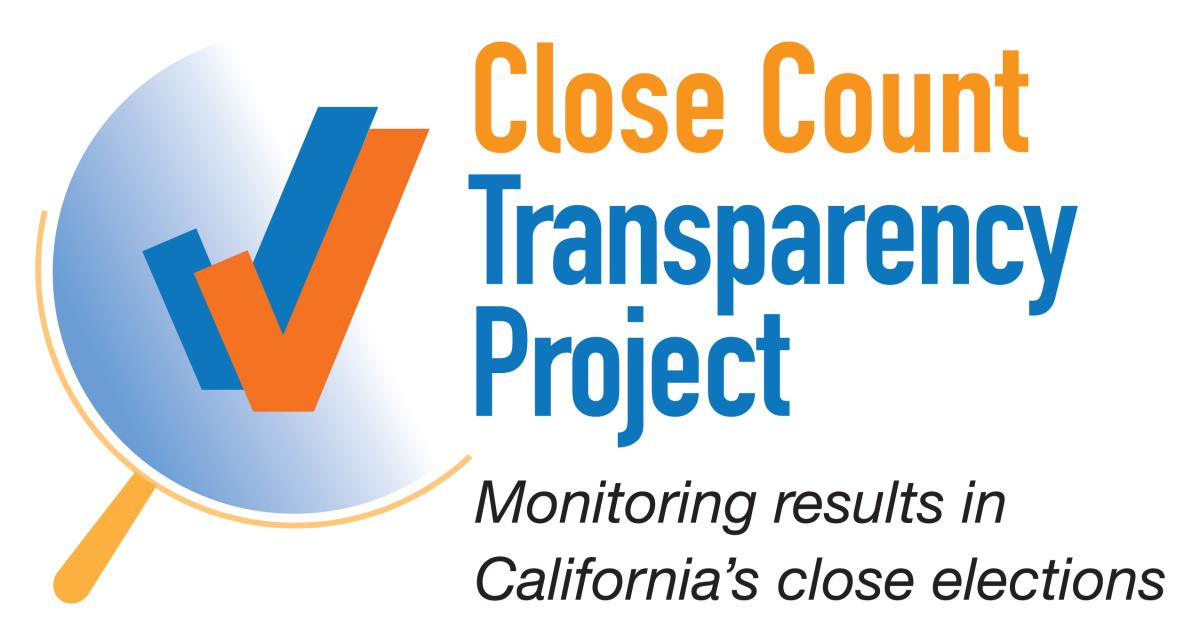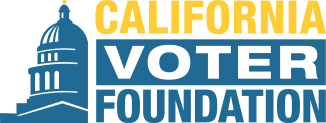Tracking results in contests “too close to call”
 To help the public monitor results in California’s close elections, the California Voter Foundation (CVF) is launching the Close Count Transparency Project, online at www.calvoter.org/closecount.
To help the public monitor results in California’s close elections, the California Voter Foundation (CVF) is launching the Close Count Transparency Project, online at www.calvoter.org/closecount.
Beginning November 5th and continuing until the county certification deadline on December 5th, CVF will provide daily updates on the status of vote counts in California’s most competitive political districts, providing a timely and trustworthy source of vital election information.
“The process of verifying and counting California ballots takes longer today than it used to, largely due to the expanded use of vote-by-mail balloting,” said CVF President Kim Alexander, the project’s director, noting that since 2020, all registered voters automatically receive a vote-by-mail ballot. “In close contests, determining winners can take days or even weeks. CVF’s Close Count Transparency Project will give the public, media, and campaigns a clearer picture, day-by-day, of how many ballots have been counted, how many ballots remain to be counted, and the margin of difference between the two candidates.”
The project will incorporate data from unofficial election results posted on state and local election agency websites and will initially track seven California congressional contests widely viewed as the state’s most competitive. The outcome of these contests will help decide whether Democrats or Republicans control the U.S. House of Representatives after the election.
In 2022, CVF launched a pilot project tracking results in the same seven congressional districts. Three (CD 13, CD 22 and CD 41) feature a rematch this year of the same 2022 candidates. The 2022 tracking sheet is also available to view and shows how CD 13’s margin was incredibly close throughout the 2022 count, ranging from 0.1 to 0.7 percent, and was ultimately decided more than three weeks after Election Day by less than 600 votes.
Depending on how close the margins are, it may be a long wait in these or other California contests before winners are determined.
Vote-by-mail ballots take longer to process than in-person ballots. Election officials must check for duplicates before counting them, and voters’ signatures must be verified before the envelope is opened. Ballots must be flattened and sometimes remade if damaged or if there are stray marks that will prevent a ballot from being accurately scanned.
Comparing how many ballots were counted shortly after Election Day 20 years ago to now highlights this change:
- In November 2004, 81 percent of ballots cast were counted within two days of Election Day, and 67 percent were cast in-person.
- In March 2024, only 59 percent of ballots cast were counted within two days of Election Day and nearly 90 percent were cast as vote-by-mail ballots.
But the rise in vote-by-mail balloting is not the only reason for delayed results.
“We have more competitive races and narrower margins in California today than we used to,” Alexander noted. “In some contests, practically every single ballot must be counted before a winner can be determined. Independent redistricting, the “Top Two” primary election process and legislative term limits - all election reforms approved by voters in recent years to make elections more competitive - have succeeded in doing so.”
California’s “Top Two” primary election process sends just the top two legislative and congressional candidates, who may be of the same party, to the General Election ballot. This has increased competition and narrowed margins in tight races, with no third or fourth candidate on the ballot to provide a vote buffer between the two leading candidates.
The sheer size of California’s electorate also contributes to the long vote count. The most populous state in the nation, California’s nearly 18 million voters in 2020 comprised 11 percent of all ballots cast nationwide in the last presidential election. Over 22 million Californians are registered and nearly 27 million eligible to vote this year.
“We know the public, media and campaigns are eager to find out who has won and lost,” said Cathy Darling Allen, CVF’s Board Chair and former Shasta County Registrar of Voters. “But it’s more important to have accurate results than fast results and, especially in closely contested races, it is imperative to ensure all validly cast ballots are counted,” she added, noting that “CVF’s Close Count Transparency Project will provide the public with a clearer understanding of why the outcome of close contests cannot be determined when a significant number of ballots remain to be counted.” CVF is also providing a template that journalists and voters can download and use to track other California contests.
The Close Count Transparency Project is supported by The Carter Center. A not-for-profit, nongovernmental organization, The Carter Center has helped to improve life for people in over 80 countries by resolving conflicts; advancing democracy, human rights, and economic opportunity; preventing diseases; and improving mental health care. The Carter Center was founded in 1982 by former U.S. President Jimmy Carter and former First Lady Rosalynn Carter, in partnership with Emory University, to advance peace and health worldwide.
The California Voter Foundation is a nonprofit, nonpartisan 501(c)(3) organization established in 1994 to improve the voting process for voters, online at www.calvoter.org.
Media contacts: Kim Alexander and Cathy Darling Allen, 916-441-2494, mail - at - calvoter.org

